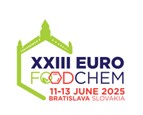Vedecký časopis - archív
Journal of Food and Nutrition Research
Súhrny čísla 2 / 2019
Boncompagni, E. – Nielsen, E. – Sanogo, M. D. – Coghetto, V. –
Anti-nutritional metabolites in six traditional African cereals
Journal of Food and Nutrition Research, 58, 2019, č. 2, s. 115-124
Enrico Doria, Department of Biology and Biotechnology, University of Pavia, Via Ferrata 9, 27100 Pavia, Italy. E-mail: enrico.doria@unipv.it
Received 11 July 2018; 1st revised 25 October 2018; accepted 30 October 2018; published online 7 March 2019
Súhrn: This article reports on the biochemical investigation of six African cereals (fonio, teff, sorghum, African rice, finger millet, pearl millet). These cereals play an important role in food security in many African and Asian regions, despite not being internationally traded, with the exceptions of sorghum and, partially, of pearl millet. Nowadays, crop breeders and research institutions are becoming concerned with improving the productivity and the nutritional quality of these cereals for reasons connected with the problems of human population growth and climate change. However, in these species less is known about the presence and content of anti-nutritional components that may impact human health, such as polyphenols, in particular tannins, phytate and the goitrogenic C-glycosyl flavones. In this work, these compounds were quantified and identified by means of biochemical assays or HPLC and LC-MS analysis. Obtained results showed that each of the six analysed cereals contained different levels of anti-nutritional or harmful goitrogenic compounds. In particular, all three examined pearl millet lines showed the sharply highest content of C-glycosyl flavones, slightly highest content of phytic acid and a relevant average level of polyphenols. On the other side, the Fonio lines presented the lowest level of C-glycosyl flavones and condensed tannins.
Kľúčové slová: African crops; cereals; nutraceutical compounds; anti-nutritional factors; genetic improvement
Na stiahnutie:
jfnr201913.pdf (PDF, 476.42 Kb, 2252x)










